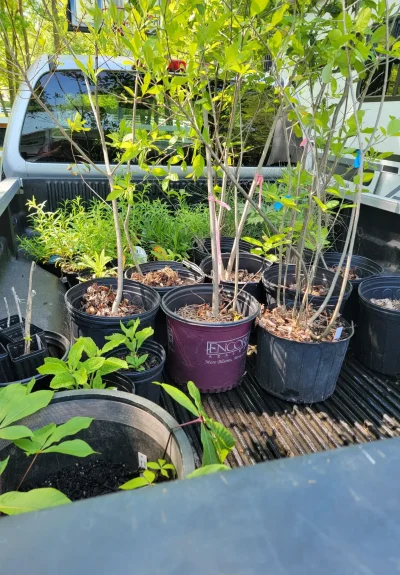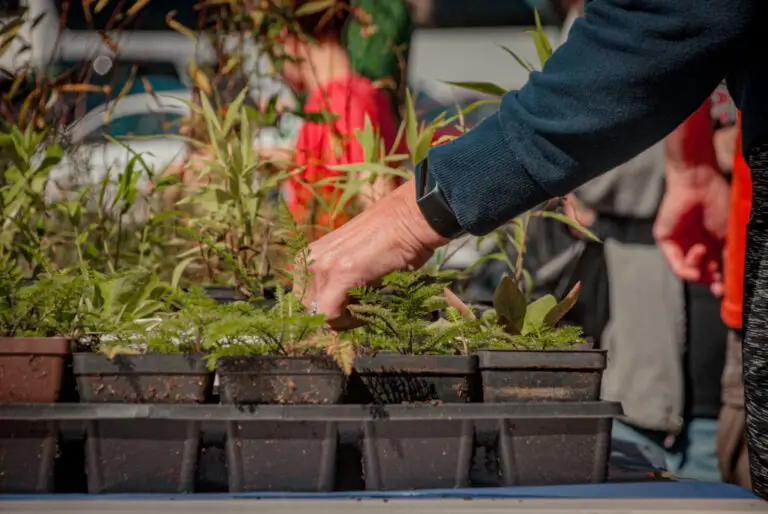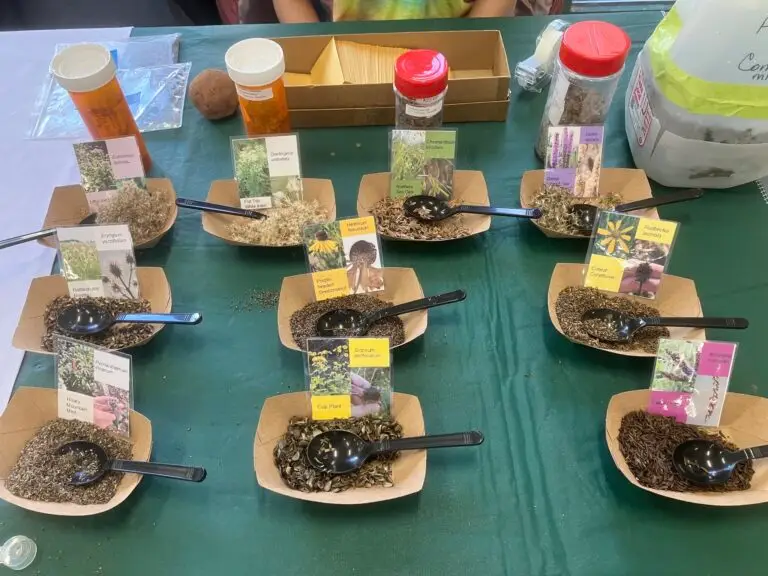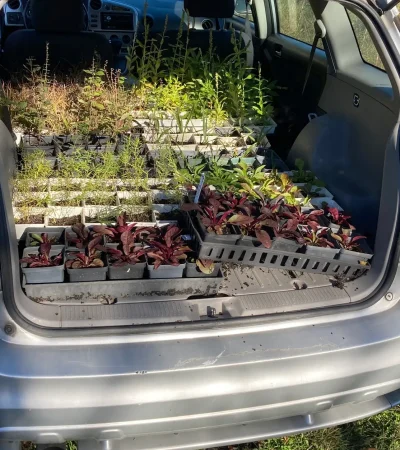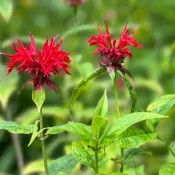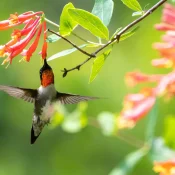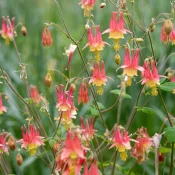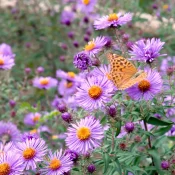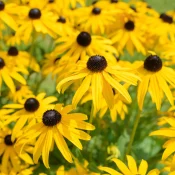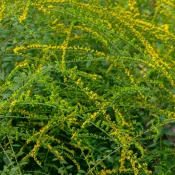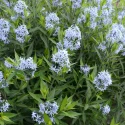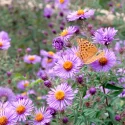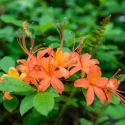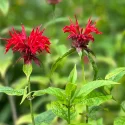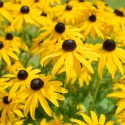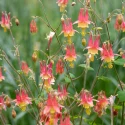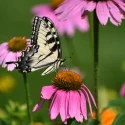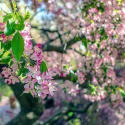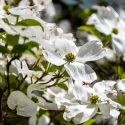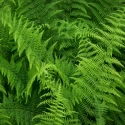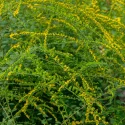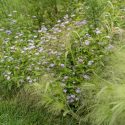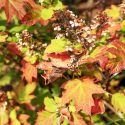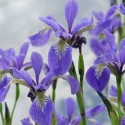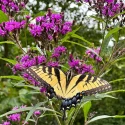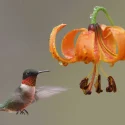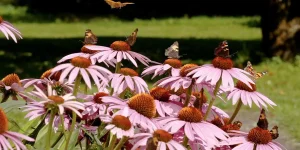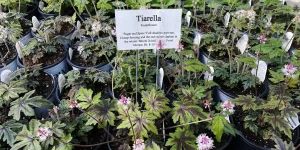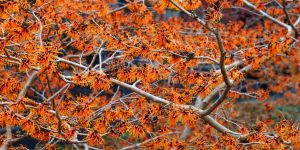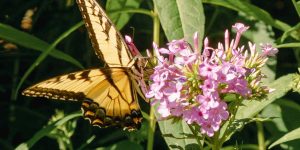Interview with Marlene Smith, President of Wild Ones Chesapeake Bay Chapter
Have you ever looked at a butterfly’s chrysalis and felt a kinship for the metamorphosis? That’s how it feels getting to know Marlene Smith, founder of the Wild Ones Chesapeake Bay chapter. After 40 years in healthcare, Marlene’s passion for native plants blossomed into a new path—becoming a Xerces Ambassador, Master Gardener, Bay-Wise Master Gardener, and helping to found multiple ecologically-focused nonprofits and initiatives.
We had the chance to sit down with Marlene to hear her advice for starting a native garden and building community-driven change. Whether you’re a Mid-Atlantic gardener or simply dreaming of your own passion-fueled metamorphosis, this conversation is one you won’t want to miss. Let’s dig in!
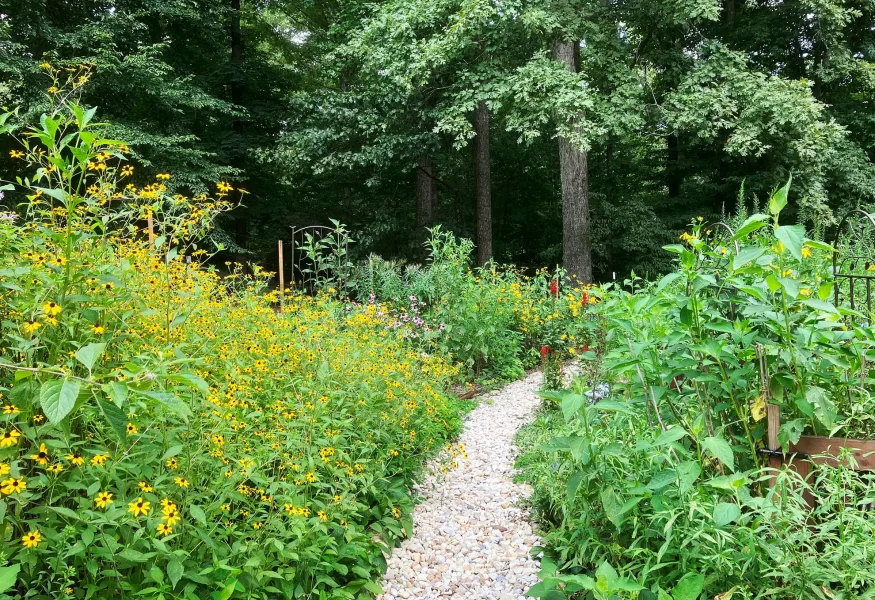
Thank you so much for the time and wisdom Marlene!
Let’s start at your beginning. Was there a moment that sparked your native plant passion?
I must admit that I was a late bloomer. It was not until 2021 when I listened to a presentation by Doug Tallamy titled “Nature’s Best Hope” that I became aware of the urgency of declining wildlife populations because the native plants they depend on are fast disappearing. Tallamy’s solution? Plant more natives.
Tallamy shared his vision for a grassroots approach to conservation, describing how homeowners everywhere can turn their yards into conservation corridors that provide wildlife habitats. Since 2021, I’ve converted over 11,000 square feet of previously managed lawn back to native habitat and joined the Homegrown National Park movement.
More recently, I’ve gained a greater appreciation for reimagining our landscapes by several visionaries, including Benjamin Vogt, Nancy Lawson, and Rebecca McMackin. Have you listened to Rebecca’s TED Talk titled “Let your garden grow wild”? If not, you should!
Marlene—did I hear you say you converted 11,000 SQUARE FEET OF LAWN into native habitat?
It’s not a single native garden—it’s multiple areas on our 3-acre wooded lot. I’ve let some of it simply convert back to the natural forest floor (i.e., soft landings) under the large canopy trees (oaks, beech, tulip poplar, sweet gum, pines, etc. — all the trees you’d expect in an eastern temperate forest) and multiple native gardens.
Here is a video overview from a few years ago:
Wow, it’s a pollinator dream!
You made a significant career shift from healthcare to environmental advocacy. What inspired this transition?
My full-time career in healthcare spanned 40 years. As I neared retirement, I knew I’d need an outlet to focus my energy and passion for helping others.
In 2015, two years before retiring, I became a University of Maryland Extension (UME) Master Gardener and Bay-Wise Master Gardener, volunteering hundreds of hours to the Master Gardener mission to educate residents about safe, effective, and sustainable horticultural practices.
Two projects that grew from my master gardener roots helped me realize my passion for environmental advocacy and youth empowerment. The first was co-founding NatureFest in 2021 with Georgia Bonney of the Neighborhood Creative Arts Center. In its fifth year, this annual event connects local families with dozens of environmentally conscious organizations to share the beauty of our natural world.
The second was in 2022 when I partnered with our local 4H educator on a youth pollinator project and met Esther Bonney. Since then, I’ve provided support and guidance to help Esther grow her local 4-H pollinator project into Nurture Natives, a nationally recognized, youth-led nonprofit.
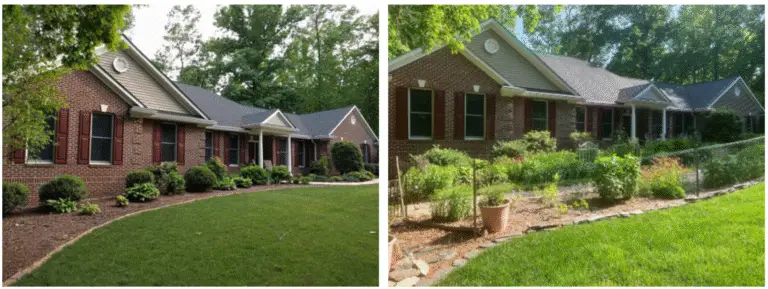
Marlene, I have to wonder if you sleep at night. That is an incredible amount of work and impact!
Let’s hear more about your leadership at Wild Ones. What does the Chesapeake Bay chapter focus on?
Located in Southern Maryland, Wild Ones Chesapeake Bay serves Charles, Calvert, St. Mary’s, Prince Georges, and Anne Arundel counties. As a local chapter, we are deeply rooted in native plants, connecting people and native plants for a healthy planet. We’re not just an organization; we’re a “boots-on-the-ground” movement, a community that celebrates the beauty and benefits of native plants to support a healthier planet. Our members play a crucial role in protecting native habitats, supporting public native garden projects, and providing valuable educational resources.
Each of these species and organisms have evolved together over millions of years and work together in ecosystems to maintain balance and support life.
Core to our mission is the concept that a healthy planet starts with native plants. It’s really quite simple.
Native plants are the foundation of a natural habitat, or ecosystem, that supports biodiversity. Biodiversity is all the different kinds of life you’ll find in one area—the variety of animals, plants, fungi, and even microorganisms that make up our natural world.
Each of these species and organisms have evolved together over millions of years and work together in ecosystems to maintain balance and support life. Biodiversity supports everything in nature that we need to survive, including food, clean water, medicine, and shelter.
What strategies have proven most effective?
Wild Ones Chesapeake Bay partners with like-minded organizations to bring our message to local communities, which I think is key to our success.
This includes installing and tending public native gardens at colleges, libraries, parks, and a local animal shelter, and then growing the relationships with those host sites to further educate and engage our local community. These public native gardens serve as demonstration and learning gardens to teach the community about various topics related to native plants and biodiversity.
They also serve as a resource for native seed collection that supports many of our programs, including the implementation of four new seed libraries in our region in the past year, hosting numerous seed propagation workshops, and propagating native plants at the USGS Bee Lab.
Through all of this work, we are growing a web of native plant enthusiasts in support of our vision of native plants and natural landscapes thriving in every Chesapeake Bay community.
I had no idea Wild Ones was responsible for so many gardens and cross-pollinated partnerships (pun intended.)
I’d love to shift and hear more about the Chesapeake Bay region. What are some of your favorite spots for native plant inspiration?
Many readers may think of large, well-known gardens in the area, like the National Arboretum, Smithsonian Gardens, U.S. Botanic Gardens, or even Mt. Cuba.
But when I think of places to visit in our region, I think of the local community gardens that may fly under the radar:
- One of my favorite local areas to visit native gardens in Leonardtown, Maryland, where you will find the Front Yard native gardens at the St. Mary’s County Public Library and the Parkette Pollinator Patch at the Leonardtown Alley.
- And not too far away are the native gardens at Butterfly Alley, the St. Mary’s Animal Adoption and Resource Center, and the Lexington Manor Passive Park Community Garden.
I have volunteered at all these gardens, and the joy and satisfaction that comes from seeing the local community embrace and learn from the native gardens I’ve helped establish is very inspiring.
After hearing about your experience with so many native gardens, I’m sure a lot of people would love to learn from your journey. What advice would you offer to someone planting native for the first time?
Just do it! Every little bit helps.
Start small. Reduce your lawn; lawn is an ecological desert.
Include a variety of plants that bloom from spring through summer and into the fall.
Plant in layers; include groundcovers as green mulch, flowering perennials and annuals, shrubs, understory trees, and canopy trees.
There are so many ways to get started on any budget:
- Think seeds, plugs, quarts
- Look for local native plant swaps
- Native plant enthusiasts are generous and happy to share their overabundance of plants
- Join a local Facebook group to learn from others
- Check out books from the library
- Watch videos and listen to podcasts
- Find and join your local Wild Ones chapter and native plant society.
Marlene’s Fuss-Free Tip for Planting Native
I don’t plant strictly by the plant guides when it comes to water, sun exposure and other conditions. I have found that plant guides are just that; they are not hard and fast rules.
I push the limits and often try plants recommended for full sun in part or full shade. The result may be slower and shorter growth, fewer and smaller blooms, or perhaps a delayed and prolonged bloom time. And I’ve found that planting outside the recommendations may help keep an aggressive species in check.
I appreciate your welcoming approach to native gardening. Any advice for ensuring long-term native garden success?
Native gardens are not maintenance-free, but rather low-maintenance. We need to move from traditional garden maintenance that is time and labor intensive to regenerative maintenance processes that require less time and labor. Regenerative maintenance encourages biodiversity with little effort:
- “Leave the leaves” in the fall and “let your garden sleep in” in the spring to provide critical habitat for overwintering insects and other wildlife.
- Leave seed heads throughout the winter to provide food and shelter for birds and other wildlife.
- Practice “chop and drop” in the spring, leaving 8-24 inches of stems standing for cavity nesting bees and placing cut stems on the ground to allow spent plant material to decompose and return nutrients to the soil.
Some folks think about regenerative maintenance as being lazy and messy, but I look at it as a way to provide ecological benefit and to free up my time for the things I love, like propagating and planting more native plants and educating others about the importance of native plants and ecological gardening.
Native plants for beginners
Plan a Garden Around a Purpose
It’s hard to pick individual plants; I instead encourage individuals to decide the purpose of their plantings.
Want to attract hummingbirds? Try:
Want to support a large number of Lepidoptera and native bees?
Choose keystone plants, such as:
Finally, let’s talk about the future. What are your aspirations for Wild Ones Chesapeake Bay and the broader native plant movement?
To support our vision of native plants and natural landscapes thriving in every community, I’d like for Wild Ones Chesapeake Bay to broaden our boots-on-the-ground movement. One example is our partnership with several other organizations to relaunch the Leonardtown Butterfly Trail, a project in which we hope to engage more local businesses and private residents in planting native plants.
For the broader movement, I’d like to see more states pass legislation on native plants and invasive plants. I am lucky to live in a state that has passed legislation in recent years that established the 2023 Maryland Native Plants Program, as well as the 2024 Invasive Plant Bill that strengthens the assessments and listings of invasive plants in our state.
I love the work you’ve done with the Leonardtown Butterfly Trail. Maybe we can make native plant tourism a thing?
Thank you so much Marlene for your expertise. It was wonderful to hear more about your work and vision for natives in the Chesapeake Bay region. I hope to see you at a future Wild Ones event. Until then—happy planting!
Further information
Wild Ones Chesapeake Bay Chapter
Join today! Visit their links page
Facebook | Instagram
